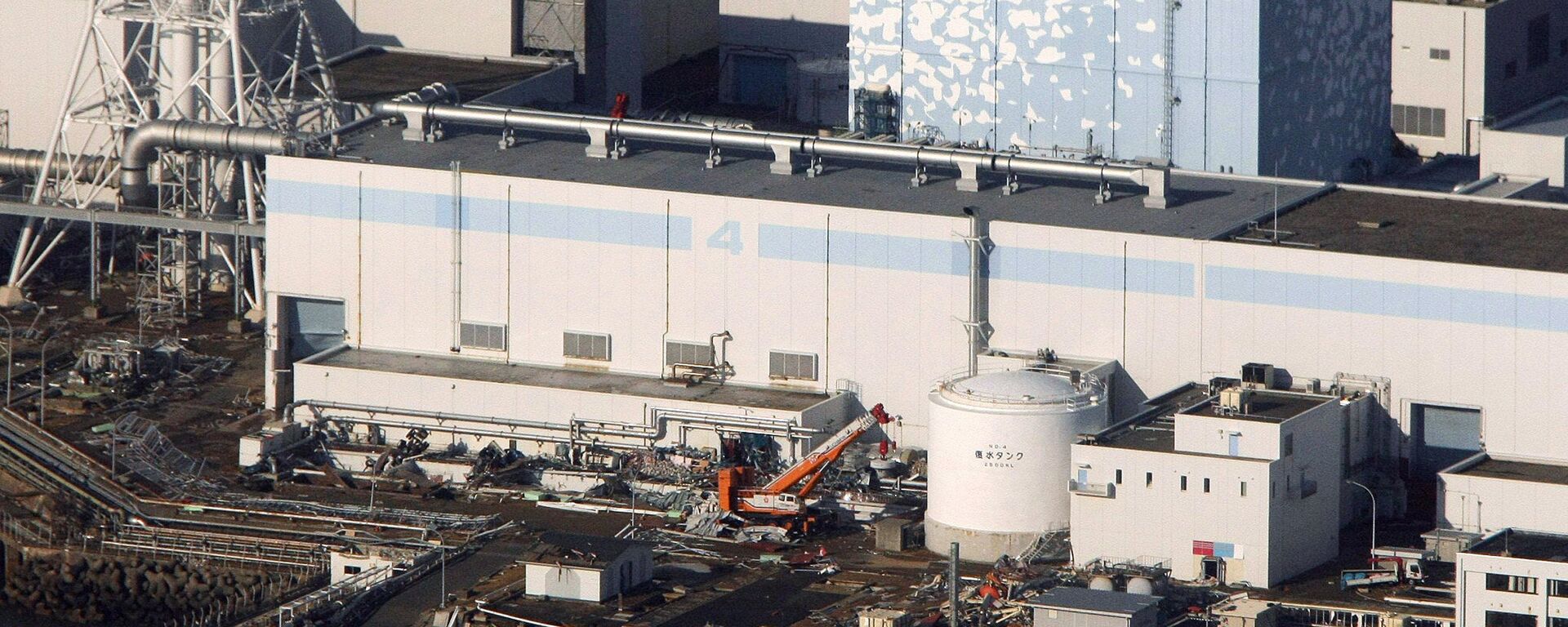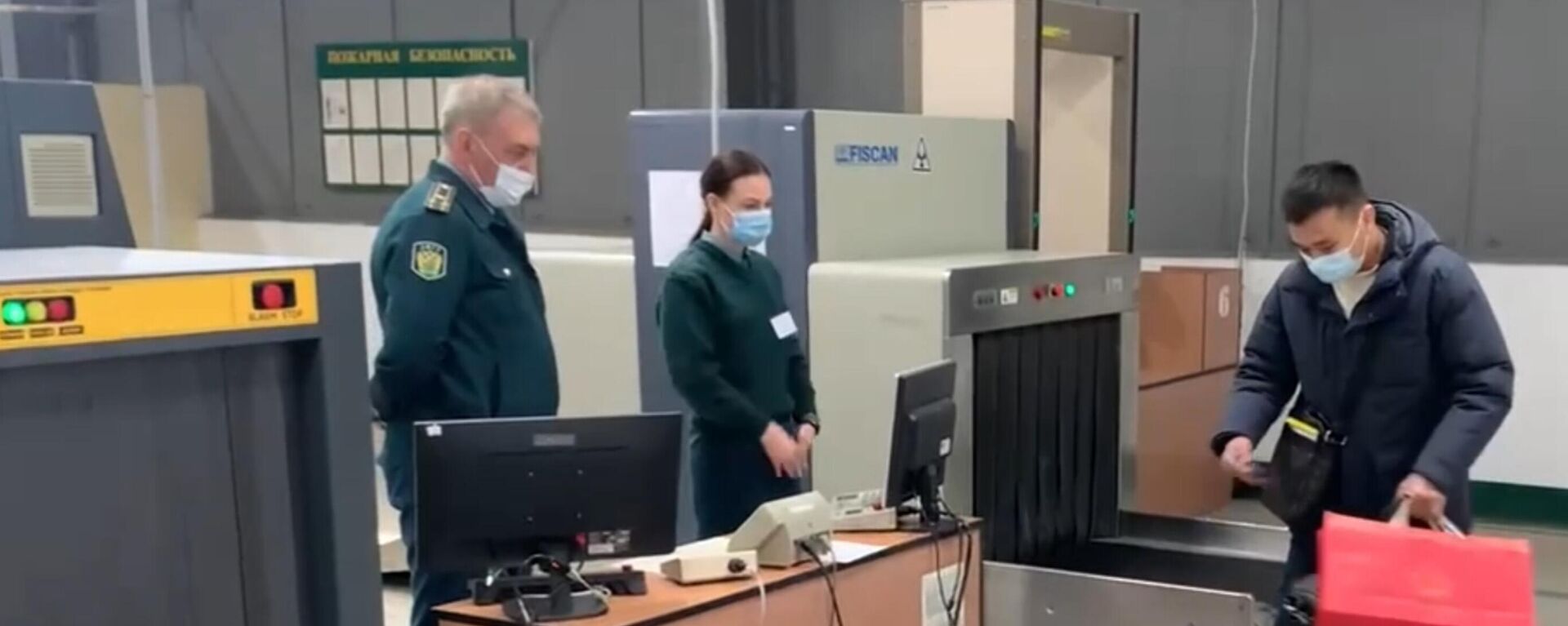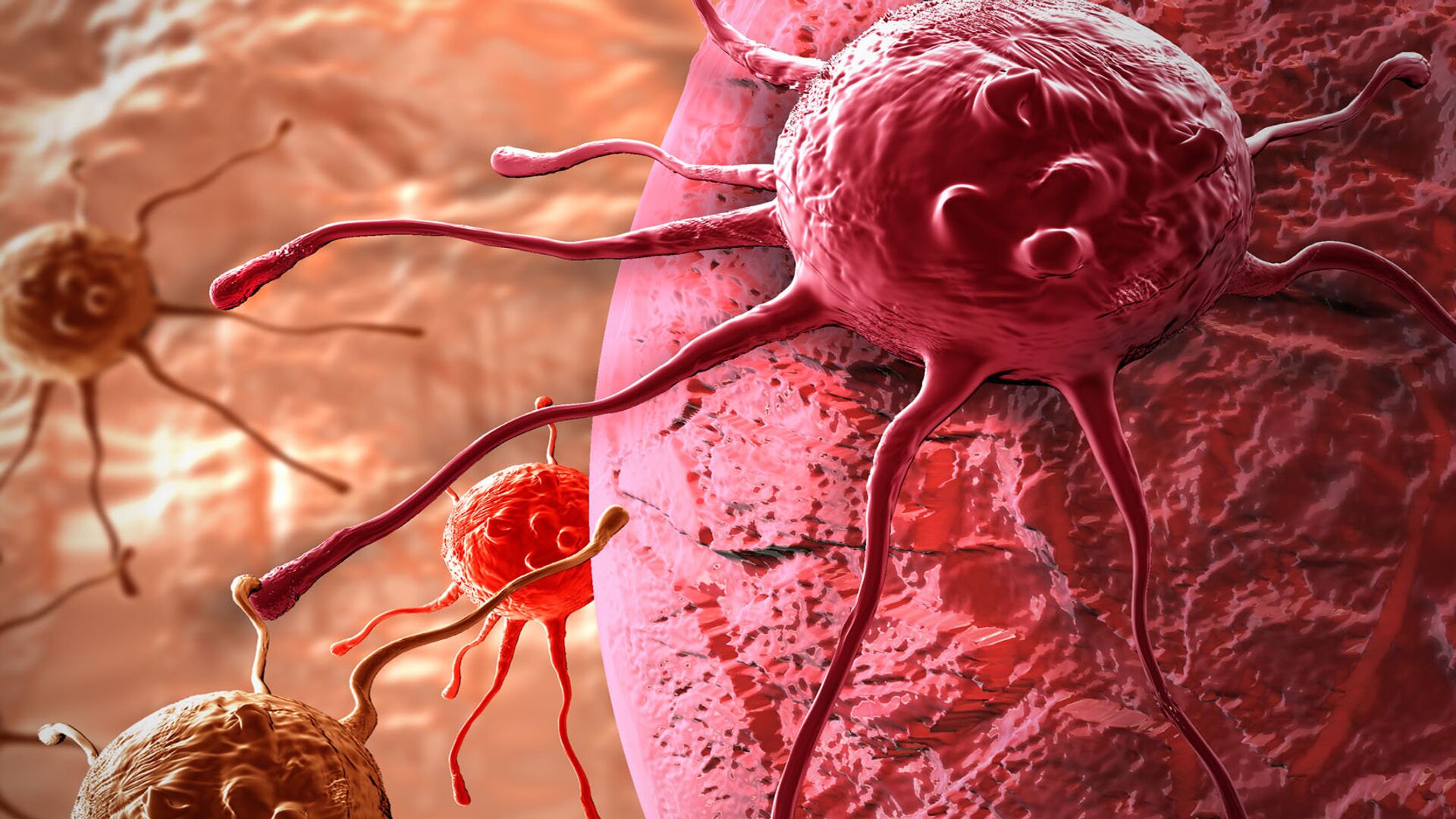https://sputnikglobe.com/20230903/cancer-risk-surges-from-even-tiny-trace-of-tritium-expert-warns-amid-fukushima-water-dump-1113091795.html
Cancer Risk Surges From Even Tiny Trace of Tritium, Expert Warns Amid Fukushima Water Dump
Cancer Risk Surges From Even Tiny Trace of Tritium, Expert Warns Amid Fukushima Water Dump
Sputnik International
The presence of even a low concentration of tritium in water is known to increase the risk of cancer by over 500%, Moscow State University oceanographer Sergei Mukhametov warned.
2023-09-03T14:36+0000
2023-09-03T14:36+0000
2023-09-03T14:36+0000
fukushima daiichi nuclear power plant
fukushima
science & tech
radioactive water
radioactive waste
japan
cancer
https://cdn1.img.sputnikglobe.com/img/105932/19/1059321930_566:0:2278:963_1920x0_80_0_0_256fbbb8d01701da4a6a0818ad38dac8.jpg
The presence of even a low concentration of tritium in water is known to increase the risk of cancer by over 500%, Moscow State University oceanographer Sergey Mukhametov has told Sputnik.As for the long-term effects of trace amounts of the hydrogen-derived isotope present in the filtered cooling water being dumped from the Fukushima nuclear site, scientists are yet to determine that, he added.According to the expert, this conclusion has been made by American scientists David Kocher and Owen Hoffman from the Oak Ridge Center for Risk Analysis. Their research presented an assessment of lifetime risks of cancer incidence associated with the drinking water standard for tritium established by the US Environmental Protection Agency (USEPA).In America, this standard is an “annual-average maximum contaminant level (MCL) of 740 becquerels per liter.”The results of their study revealed that the average risk of skin cancer for both sexes when ingesting tritium in drinking water at the maximum contaminant level (MCL) over an average life expectancy (80 years for women and 75 for men) is 0.0003.At the same time, the lifetime risk of cancer with a daily consumption of two liters of drinking water over an average life expectancy, excluding tritium and cases of skin cancer, is 0.000056. Thus, the risk in this case increases more than five-fold.Earlier, the Tokyo Electric Power Company (TEPCO), the operator of the damaged Fukushima Daiichi Nuclear Power Station (Fukushima-1), detected tritium (T, or 3H - a radioactive substance) in the seawater off the northeastern shoreline of the port in proximity to the facility. This was the first detection of tritium since the release of treated, low-grade radioactive water commenced. According to TEPCO, the seawater around the plant has tritium levels below 10 becquerels per liter, well below the company's 700-becquerel set limit and the World Health Organization's (WHO) recommended safe drinking water threshold of 10,000 becquerels.While initially Tokyo planned to begin discharging water purified of all radionuclides except tritium into the ocean 0.6 miles from the station this spring, the deadline was pushed back to the summer of 2023 due to adverse weather conditions and other factors. The entire process is expected to take up to 30 years.Japan’s decision to discharge treated nuclear-tainted water into the Pacific has sparked vehement objections from the local population, the international humanitarian community, as well as from China, South Korea, and other neighbors in the region, who fear radioactive contamination. The International Atomic Energy Agency argued that the treated wastewater will have a negligible radiological impact on people and the environment.
https://sputnikglobe.com/20230824/fukushima-very-dangerouscauses-genetic-damage-at-tiny-conventional-doses--1112839265.html
https://sputnikglobe.com/20230901/tritium-found-in-seawater-near-japans-fukushima-amid-treated-radioactive-water-dump-1113057202.html
https://sputnikglobe.com/20230829/chinese-start-buying-russian-salt-amid-fukushima-water-discharge-1112938950.html
fukushima
japan
Sputnik International
feedback@sputniknews.com
+74956456601
MIA „Rosiya Segodnya“
2023
News
en_EN
Sputnik International
feedback@sputniknews.com
+74956456601
MIA „Rosiya Segodnya“
Sputnik International
feedback@sputniknews.com
+74956456601
MIA „Rosiya Segodnya“
tokyo electric power company, tepco, tritium, fukushima daiichi nuclear power station, fukushima-1, treated radioactive water, pacific ocean, international atomic energy agency, iaea, seawater detection, becquerels per liter, tritium release
tokyo electric power company, tepco, tritium, fukushima daiichi nuclear power station, fukushima-1, treated radioactive water, pacific ocean, international atomic energy agency, iaea, seawater detection, becquerels per liter, tritium release
Cancer Risk Surges From Even Tiny Trace of Tritium, Expert Warns Amid Fukushima Water Dump
Japan started discharging radioactive, tritium-laced wastewater from the earthquake and tsunami-hit Fukushima Daiichi Nuclear Power Plant in late August, with all of the country's immediate neighbors, plus Mexico and countries in Latin America, voicing concern over the move. However, Japanese authorities assured that the procedure is safe.
The presence of even a low concentration of
tritium in water is known to increase the risk of cancer by over 500%, Moscow State University oceanographer Sergey Mukhametov has told
Sputnik.
As for the long-term effects of trace amounts of the hydrogen-derived isotope present in the filtered cooling water being dumped
from the Fukushima nuclear site, scientists are yet to determine that, he added.
According to the expert, this conclusion has been made by American scientists David Kocher and Owen Hoffman from the Oak Ridge Center for Risk Analysis. Their
research presented an assessment of lifetime risks of cancer incidence associated with the drinking water standard for tritium established by the US Environmental Protection Agency (USEPA).
In America, this standard is an “annual-average maximum contaminant level (MCL) of 740 becquerels per liter.”
The results of their study revealed that the average risk of skin cancer for both sexes when ingesting tritium in drinking water at the maximum contaminant level (MCL) over an average life expectancy (80 years for women and 75 for men) is 0.0003.
At the same time, the lifetime risk of cancer with a daily consumption of two liters of drinking water over an average life expectancy, excluding tritium and cases of skin cancer, is 0.000056. Thus, the risk in this case increases more than five-fold.

24 August 2023, 09:40 GMT
Earlier, the Tokyo Electric Power Company (TEPCO), the operator of the damaged Fukushima Daiichi Nuclear Power Station (Fukushima-1),
detected tritium (T, or 3H - a radioactive substance) in the seawater off the northeastern shoreline of the port in proximity to the facility. This was the first detection of tritium since the release of treated, low-grade radioactive water commenced. According to TEPCO, the seawater around the plant has tritium levels below 10 becquerels per liter, well below the company's 700-becquerel set limit and the World Health Organization's (WHO) recommended safe drinking water threshold of 10,000 becquerels.
In late August, Japan’s Fukushima Nuclear Power Plant operator announced that it was putting into motion its plan to release over a million metric tons of treated, highly-diluted radioactive wastewater from the crippled plant into the Pacific Ocean. Tokyo has argued that the treated water needed to be discharged as it urgently needed to free up space at the Fukushima facility.
While initially Tokyo planned to begin discharging water purified of all radionuclides except tritium into the ocean 0.6 miles from the station this spring, the deadline was pushed back to the summer of 2023 due to adverse weather conditions and other factors. The entire process is expected to take up to 30 years.

1 September 2023, 18:50 GMT
Japan’s decision to discharge treated nuclear-tainted water into the Pacific has sparked
vehement objections from the local population, the international humanitarian community, as well as from China, South Korea, and other neighbors in the region, who
fear radioactive contamination.
The International Atomic Energy Agency argued that the treated wastewater will have a negligible radiological impact on people and the environment.

29 August 2023, 09:56 GMT






